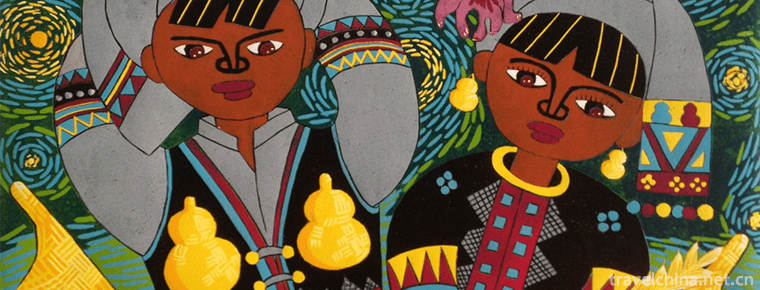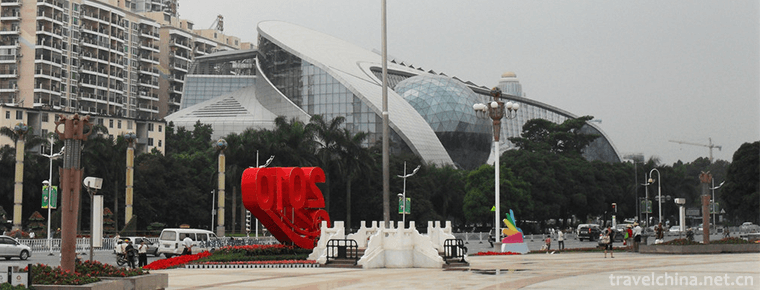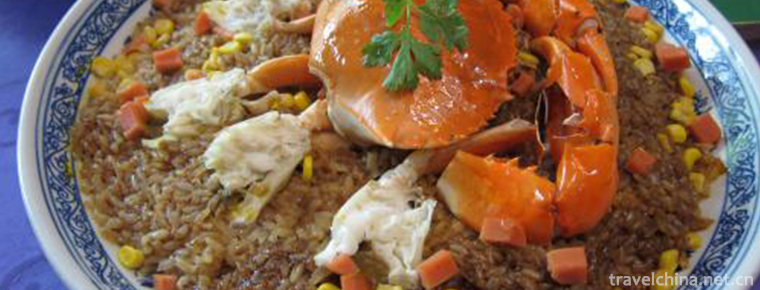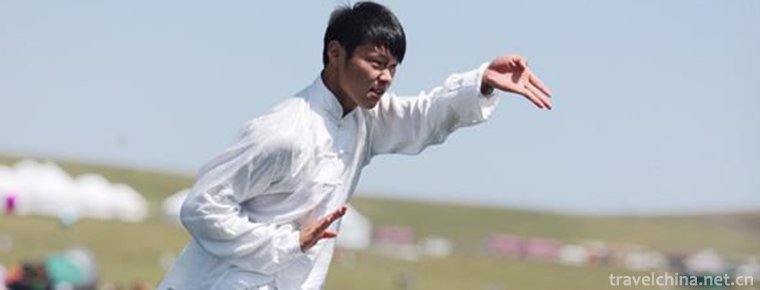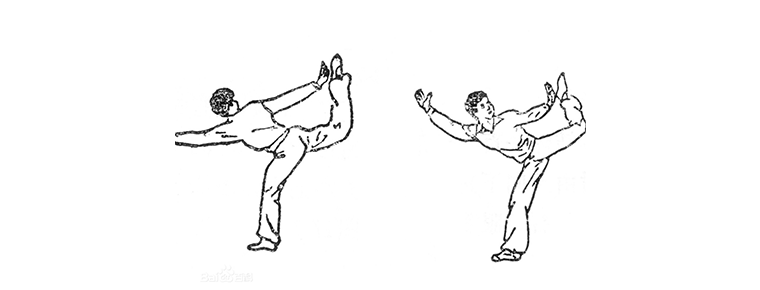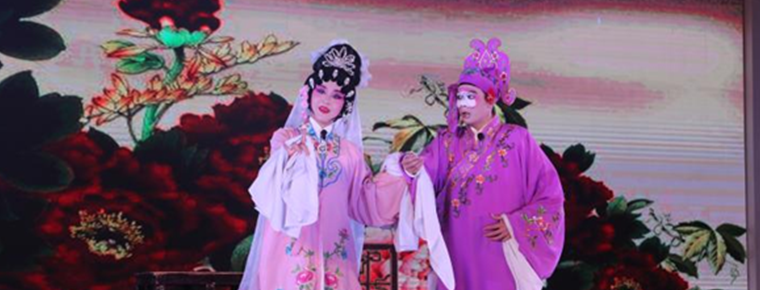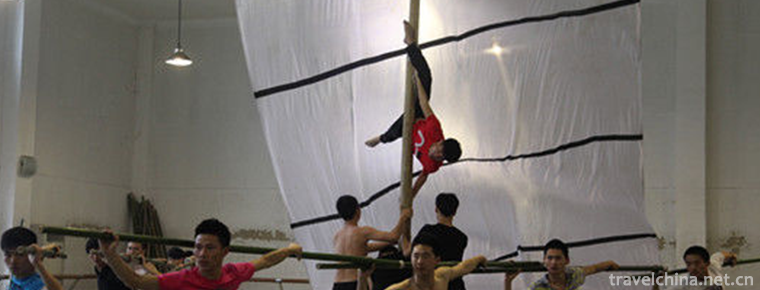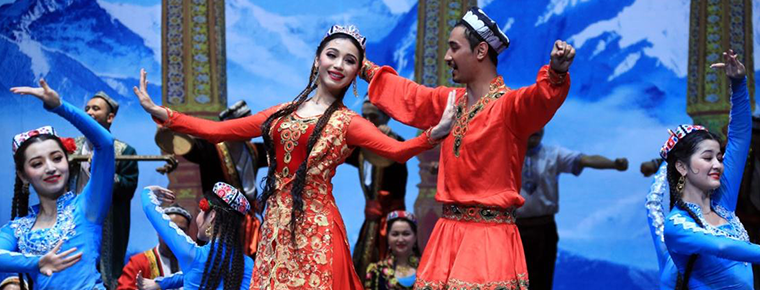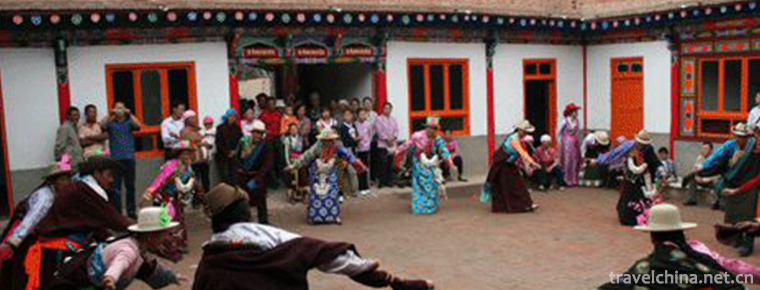Wenzhou embroidery
Wenzhou embroidery
Ou embroidery, also known as painting curtain, is a local traditional art in Wenzhou, Zhejiang Province. It is produced in Oujiang area. It is also one of the special handicraft products of "three carvings and one embroidery" in Zhejiang Province. It is developed from traditional Chinese embroidery. It is as famous as the four famous embroidery in China (Hunan embroidery, Su embroidery, Shu embroidery and Guangdong embroidery). Ou embroidery is one of China's famous export embroidery. It is not only treasured by the state, but also presented as a national gift. It has the theory of "hair embroidery diplomacy".
Ou embroidery is an embroidery technology gradually developed from decorative daily necessities. The early embroidery includes gowns, costumes, Shouping and so on. Later, it expanded to embroidery landscapes, figures, animals, calligraphy and so on. It has high ornamental value and decorative effect. Ou embroidery is a unique boutique in Chinese embroidery technology.
In 2001, Zhejiang Province listed it as one of the key protected arts. In 2006, it was selected as the first batch of intangible cultural heritage list in Zhejiang Province .
In 2008, the Ou embroidery declared by Wenzhou City, Zhejiang Province, was approved by the State Council to be included in the second batch of national intangible cultural heritage.
historical origin
Ou embroidery began in the Tang Dynasty and flourished in the Ming and Qing Dynasties.
In the Song and Yuan Dynasties, embroidery was popular among Wenzhou people on shoes, hats and clothes. In the Huiguang Pagoda of Xianyan Temple built from Jingyou in the first year of the Northern Song Dynasty to the third year of Qingli (1034-1043), a warp-wrapped warp-wrapped warp-wrapper was unearthed. The warp-wrapped warp-wrapped warp-wrapped warp-wrapped warp-wrapped warp-wrapped warp-wrapped warp-wrapped warp-wrapped warp-wrapped warp The pagoda was built by Yongjia people, and embroidery should be the work of Wenzhou women.
Wenzhou has a well-developed sericulture and silk industry, with rich historical events and popular opera and literature, there are costumes, Buddhist temples need Zhaoyi, lotus seat, as well as painters Wang Xiangchan, Cai Xiaoqiu, Su Zhaoshuo, Ma Mengrong, who can sample Ou embroidery paintings, which provides good conditions for the development of embroidery industry.
In the late Ming and early Qing Dynasties, Wenzhou folk embroidery has changed from simple flat needle and set needle to multiple needle methods. In the three years of Xianfeng in Qing Dynasty (1853), Wenzhou had the first professional embroidery shop, Linfeng Tower, employing male and female embroidery workers, embroidering gowns, costumes, cheongsams, as well as temple tents, table covers, chair drapes, Shouping, hanging Market attractions, embroidery from family sideline began to professional commodity production. In the second year of Xuantong (1910), Wenzhou embroidery artist Lin Senyou opened a beautiful embroidery workshop and began to have Ou embroidery pictures, an art appreciation.
In the five years of the Republic of China (1916), Wenzhou businessmen saw a prosperous export of Hunan embroidery and Su embroidery in Shanghai. They returned to Wenzhou to establish an embroidery Bureau and hired male workers to specialize in export products. Since then, Ou embroidery has entered European and Nanyang markets. There are embroidery clubs in the front streets, Wuma Street and Dagongqiao Street of the city proper. In the ten years of the Republic of China (1921), there were more than 20 embroidery shops in the urban area, with 650 employees. The annual output value was about 40,000 yuan. The export market was called Ou embroidery. It was once as famous as Hunan embroidery and Su embroidery and was one of the three major embroidery in China. In 1926, Hong Kong and Taiwan businessmen came to Wenzhou for orders. Ou embroidery was unprecedented. The embroidery village set up by Lin Yusheng had excellent quality and color. There were apprentices of embroidery design and embroidery apprenticeship.
Wenzhou embroidery cooperative was established in 1952. Through apprenticeship and collective training of artists, the skills were well inherited. In the 1960s, Ou embroidery undertook to produce national gifts and exhibits abroad. Its products were exported to more than 50 countries and regions overseas. While producing a number of Ou embroidery works of art, Ou embroidery talents were trained. Ruian has Taoshan Embroidery Factory, which rents the houses near the river in Huadiandi Village as the workshop, and receives the business materials from Wenzhou Embroidery Co-op for processing. At most, there are more than 240 embroidery workers.
In the 1980s, Ou embroidery processing points in rural areas included Jiangbei, Shuomen, Meitou (now Ou Hai Haicheng), Baotian and Taoshan processing points. Later, only Taoshan remained. Taoshan has Huang Zhenglan, Lin Dongmei, Lou Taomei, Wu Xiunian, Chen Shizhu and so on. This embroidery group is very persistent and is still engaged in the processing of Ou embroidery materials .
Representative Works
In the 1930s, Cai Moxiao, a Wenzhou female painter, set up a special embroidery department in the nursery school. She and Jin Jingzhi, a famous embroidery artist, selected Ou Embroidery Bird for Panama World Expo and won an award. In 1979, the workers of Wenzhou Ou Embroidery Factory used more than 100 kinds of colored silk thread and more than 20 kinds of stitches. They embroidered a huge Ou Embroidery "Twelve Golden Needles of Dream of Red Mansions" which was 1 meter high and 4 meters wide. It was displayed at the China Silk Clothing Embroidery Fair held in Hong Kong. The faces, hairpins, jewelry and looks of 16 figures on the screen were different. Flowers in all seasons were open at the same time, and it could be called the representative work of Ou Embroidery.
In 1998, the huge Ou embroidery "Crane and Deer in the Spring" was 3.5 meters long and 1.4 meters wide. It used more than 100 embroidery colors. It was the first Ou embroidery work in history that combined figures, flowers and birds, landscapes and animals.
Ou Embroidery "Jinyu Yingchun" won the gold medal of the 2001 Western Expo, Jiruitou won the silver medal of the 2003 Western Expo, and Xiongzi Fengfen was collected by the Beijing Great Hall of the People.
In April 2010, Ou Embroidery won gold medals in Tianchi Bath Crane, Tiger Rhyme and Fish Music at the 2nd Zhejiang Arts and Crafts Exhibition.
In June 2010, the Ministry of Culture held a exhibition of the skills of 100 masters of Arts and crafts from China's intangible cultural heritage in Beijing Exhibition Hall. Six Ou embroidery works including Haiyun, Jinyu Yingchun and Royal Vogue were on display .
artistic characteristics
Acupuncture characteristics
Wenzhou is situated on the Bank of Oujiang River, so it is also called "warm embroidery". It is the second batch of national intangible cultural heritage. The producer scrapes the green skin of the bamboo, divides it into layers, cooks and draws silk, weaves it into bamboo curtains, and then uses pigments or colored threads to make works of flowers, birds, landscapes, figures and so on. Ou embroidery is characterized by a variety of needles and fine workmanship. For example, in Pine Eagle Picture, an eagle uses more than ten needle methods, such as fan needle, cutting needle, flat needle, etc. It also uses many color lines with different texture, thickness and color.
Ou embroidery has fine composition, distinct texture, neat stitches, changeable stitching methods, bright and eye-catching embroidery surface, bright and bubbly color, relaxed and lively animal feathers, and delicate and vivid embroidery of characters and orchids. Its style is characterized by "prominent theme, bright color, concise composition, clear embroidery." It has strong decorative and local style. Its production method is: scrape the green skin of bamboo, through layered slices, cook and draw silk, weave bamboo curtain, and then use pigments and color thread to make works on it. There are more than 20 kinds of needle types, such as broken needle, rolling needle, random needle and so on. In ancient times, Wenzhou girls had a fine tradition of embroidery: "twelve women comb their hair, twelve and thirteen women teach embroidery".
Process needle method
Ou embroidery process is very special. The producer first scrapes the green skin of bamboo, divides it into layers, cooks and draws silk, weaves it into bamboo curtains, and then embroiders flowers, birds, landscapes and figures on it with pigments or colored thread. Its greatest characteristic is that there are many needles and fine workmanship. Made of Moso Bamboo by drawing silk and weaving, flowers and birds, mountains and rivers or figures are painted on it with colored thread, so it is also called "painting curtain". Ou embroidery products have a variety of needles, fine workmanship, with embroidery characters as a unique skill, with bright colors, bright and vivid embroidery face, ingenious combination of embroidery and painting, symmetrical and flexible needling, even stitches, concise composition, prominent theme and so on.
The main reason for the difference in embroidery is the result of the application of needle method. Ou embroidery has been developed in many stages and integrated in many dimensions. The results are as follows: uniform needle, cut needle, sleeve needle, needle, needle application, needle rolling, vegetable needle, mixed needle, broken needle, side needle, wrapped needle, netting needle, tray needle, long needle, short needle, needle injection, herringbone needle, eight-character needle, row arrangement height, pin bite, etc. More than a dozen stitches. Therefore, the embroidery products embroidered by Ou embroidery are exquisite in composition and accurate in shape; the combination of painting and embroidery, and the combination of virtual and solid; the precise stitching and clear embroidery; the flexible operation of needles, vivid shaping; the bright and pleasant color.
Current situation of inheritance
In 1979, the workers of Wenzhou Xie Embroidery Factory used more than 100 kinds of colored silk thread and more than 20 kinds of stitching methods. They embroidered into a huge embroidery, Dream of Red Mansions, Twelve Golden Needles, which is 1 meter high and 4 meters wide. It has a vivid shape and can be called the representative work of Ou Embroidery. During the exhibition in Hong Kong, the audience was enthusiastic. In this 2-metre-long and 1-metre-wide giant painting, flowers blossom in all seasons at the same time, and the "twelve golden hairpins" gather in one picture. Sixteen characters have different faces, hair buns, jewelry and looks. The embroidery is colorful and dazzling.
Wei Jingxian's "Old Baishi" sketch embroidery, won the Chinese Arts and Crafts Hundred Flowers Award, Excellent Creation Award. Portrait embroidery "Sun Yat-sen", "Zhang Daqian" and "Queen Elizabeth II of England" participated in the Millennium Chinese Cultural Exhibition held in Taiwan.
In 1998, a 3.5-meter-long and 1.4-meter-wide giant embroidery piece "Crane and Deer in the Spring" was once again sensationalized at home and abroad. This work combines all the traditional techniques of Ou embroidery and uses more than 100 embroidery colors. It is the first Ou embroidery work in history that integrates figures, flowers, birds, landscapes and animals.
Ou embroidery work Qun Ying Xiang Ji, created by four masters of Ou Embroidery Art Institute in Wenzhou, is ingenious in choosing thread needles. Ou embroidery's superb skills are vividly reflected, inheriting and developing the traditional exquisite skills of Ou embroidery.
Jinyu Yingchun won the gold medal of the 2nd China Arts and Crafts Master Works and Excellent Works Exhibition at the 2001 West Expo. The author, Lin Hui (female), was born in 1959 in Wenzhou. Master of Folk Art. The main works are "Spring Wind Dancing Colors", "Imperial Vogue" and so on.
These Ou embroidery exquisite products are all based on the past and suitable for today. They combine the great achievements of traditional techniques and innovate, fully demonstrating the inclusiveness and innovativeness of Ou embroidery, which shows that Ou embroidery is a very viable craft variety. Ou embroidery is famous for its delicate composition, rigorous embroidery, delicate needle handling and bright color. Many excellent works have been selected as national gifts and have participated in many international art expositions. Ou embroidery was listed as a key protected art in Zhejiang Province in 2001.
Inheritance Significance
Ou embroidery, as one of the most representative folk crafts in Wenzhou, has high cultural and artistic value. In-depth excavation of its artistic value, academic value, folklore value and other aspects of cultural value, so that it has a more industrialized cultural implication basis.
The government should foster and guide such traditional crafts and intangible cultural heritage as Ou embroidery to create a good environment for them. Although after liberation, Ou embroidery has entered the stage of factory (industry) to a certain extent. For other reasons, only a few people are engaged in the production and sale of Ou embroidery. In the market economy, the production and consumption market can not be strong by the weak strength of individuals. The government should create an atmosphere and environment for the development of Ou embroidery industry, guide it and provide policy guarantees, especially from the aspects of industrial development, institutional innovation, personnel training and incentive mechanism, to strengthen innovation and reform, to build three basic platforms of industry, system and personnel to promote the development of Ou embroidery, to further develop the historical and technological advantages of Ou embroidery and to strengthen Ou embroidery. Industry, build Ou embroidery industry cluster .

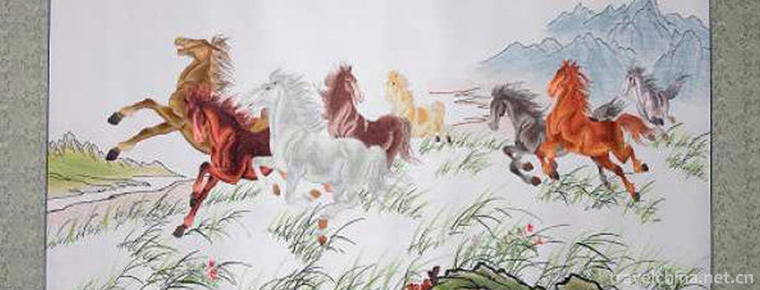
-
Mupa Mipa
Mupa Mipa, a local traditional folk literature in Simao City, Yunnan Province, is one of the national intangible cultural heritage..
Views: 348 Time 2018-12-15 -
Guangxi Science and Technology Museum
Guangxi Science and Technology Museum is located in Nanning National Avenue. It was established in March 2006 and started construction in December. It covers an area of 14655 square meters.
Views: 352 Time 2019-01-13 -
Yushui Ancient Hot Spring
Maoming Yushui Ancient Hot Spring, under the Yuyi Shishan Mountain, beside the ancient post road, hot springs are all over the place. The water is boiling all the time. Officials in counties and citie.
Views: 138 Time 2019-03-09 -
Babao Green Crab Rice
Two crabs, 700g, 165G glutinous rice, 45g ham, 20g open onion, 45g white fruit, 75g peanut, dried mushroom, dried asparagus, onion, ginger slices, yellow wine, salt and clear soup (300g).
Views: 371 Time 2019-03-26 -
Jia Jia Quan
Amaranth, also known as Amaranth, Amaranth hammer, one of the traditional Chinese boxing. It was founded by Mr. Junai Zhou (1724-1783) in Heshui County, Zhengzhou, in the reign of Qianlong in the Qing.
Views: 224 Time 2019-04-16 -
Poke feet
Poking feet is one of Chinese boxing. Leg and foot kungfu is the main form. It is said that it originated in the Song Dynasty and flourished in the Ming and Qing Dynasties.
Views: 109 Time 2019-04-22 -
Firing Techniques of Fengxi Porcelain
Fengxi Porcelain Firing Technology, a local traditional technology in Fengxi District, Chaozhou City, Guangdong Province, is one of the national intangible cultural heritage..
Views: 771 Time 2019-04-29 -
Hua Chao Opera
Huachao Opera, a local traditional drama in Zijin County, Guangdong Province, is one of the national intangible cultural heritage..
Views: 117 Time 2019-05-04 -
Lishui Shipmans Chant
Lishui Shipman's Chant is a unique work chant transformed from local minor. It is a kind of traditional folk music with strong rhythm, which reflects the hard life of the shipmen and the work scene in.
Views: 127 Time 2019-05-13 -
Machirev
Machirev is a name for a form of dance and entertainment, which refers to a large-scale self-entertainment activity with a large number of participants (the so-called participation refers to those who.
Views: 95 Time 2019-07-06 -
Zerou
Zerou (Shangyu Zerou), also known as Ashze, is a Tibetan folk dance in Guide County, Qinghai Province. Especially "Shangyu (Chinese: lower row) is soft" is the most important. They often per.
Views: 439 Time 2019-07-16 -
Mineral resources in Suining
The mineral resources with more reserves in Suining City mainly include oil, natural gas, well salt, placer gold, limestone, etc., especially natural gas and brine resources. Suining has developed and utilized 7 kinds of mineral resources, including shale mine.
Views: 194 Time 2020-12-16
